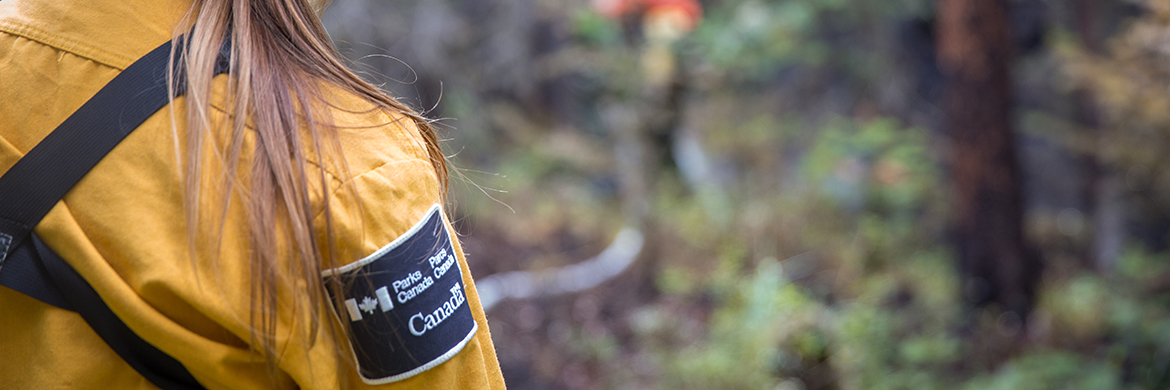
Fire Management at Gulf Islands National Park Reserve
Gulf Islands National Park Reserve
For thousands of years, fires have occurred on the lands now known as Gulf Islands National Park Reserve. These fires are a product of the diverse natural and cultural history of this unique area.
Today, fire is carefully managed within the National Park Reserve. In order to prevent damaging wildfires, campfires are permitted within designated campfire pits at select campgrounds. Campfires are prohibited in backcountry locations, including on beaches and below the high tide line. All wildfires are suppressed by Parks Canada employees.
Fire is also used as a tool to help manage ecosystems. “Prescribed” fires are used to restore ecosystem health and to facilitate cultural burning by local First Nations.
Fire and Nature | Wildfire Response | Wildfire Prevention | Eco-Cultural Burning | Prescribed Fire
Fire and Nature
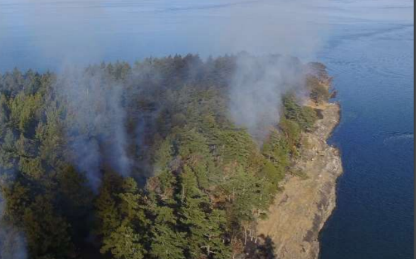
Fire is a natural process, and plays a critical role in shaping natural areas in the Southern Gulf Islands region.
- Fire cycles nutrients: Fires allow important nutrients, such as carbon, nitrogen, and phosphorous, to be released from vegetation and flow through ecosystems to be used by other plants and animals.
- Fire “heals” the landscape: Fires remove unhealthy, diseased trees and plants, and can help limit the spread of forest pests and insects. Young forests that grow back after fires are preferred by some species, providing fresh green growth and new habitats.
- Fire “cleans” the forest: If a forest has not burned or been changed in a long time, dead vegetation accumulates. When frequent small, low intensity fires burn regularly through an area, this dead fuel is removed. In turn, the risk of a dangerous wildfire occurring is minimized.
Wildfire Response
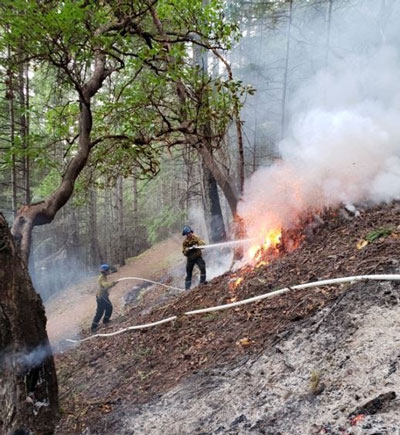
While fire can be beneficial to landscapes, out-of-control wildfires can threaten the environment, homes, property, and important cultural areas. Wildfires are dangerous, unplanned, and uncontrolled fires. When a wildfire is reported, a dedicated team responds immediately.
Firefighting equipment is strategically placed throughout the National Park Reserve. Crews use water pumps, hoses, and hand tools to suppress wildfires. In some cases, aircrafts like helicopters and water bombers can also be used to limit fire spread.
Parks Canada works with local partners, fire departments, and the British Columbia Wildfire Service to suppress wildfires.
Wildfire Prevention
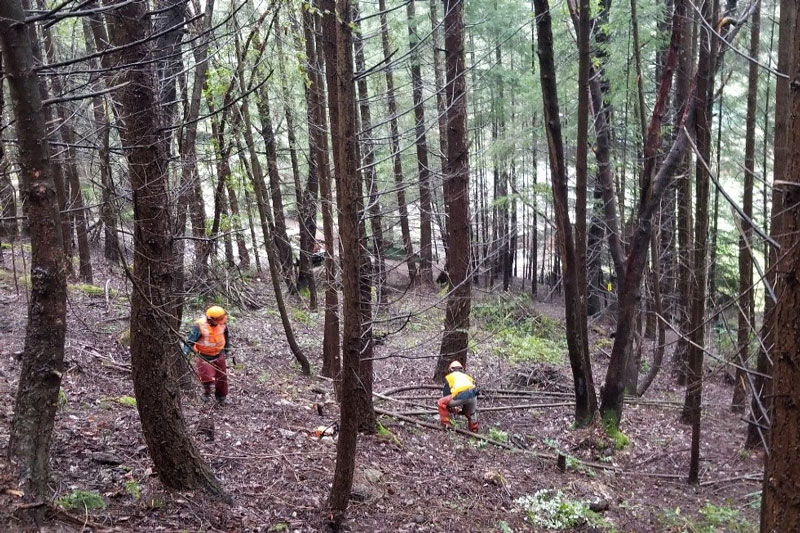

Fires are prohibited in the National Park Reserve, including on beaches and below the high tide mark, except in designated fire pits in drive-in campgrounds (SMONECTEN (McDonald) and Prior Centennial). These regulations prevent any unattended or abandoned campfires from becoming dangerous and unexpected wildfires. Click here to learn about campfire regulations.
Gulf Islands National Park Reserve may also implement campfire bans during periods of elevated fire danger. The National Park Reserve works with the province and local municipalities to align fire bans and burning regulations where possible.
Gulf Islands National Park Reserve is conducting projects to reduce wildfire risk, working with local communities and FireSmart®.
Eco-Cultural Burning
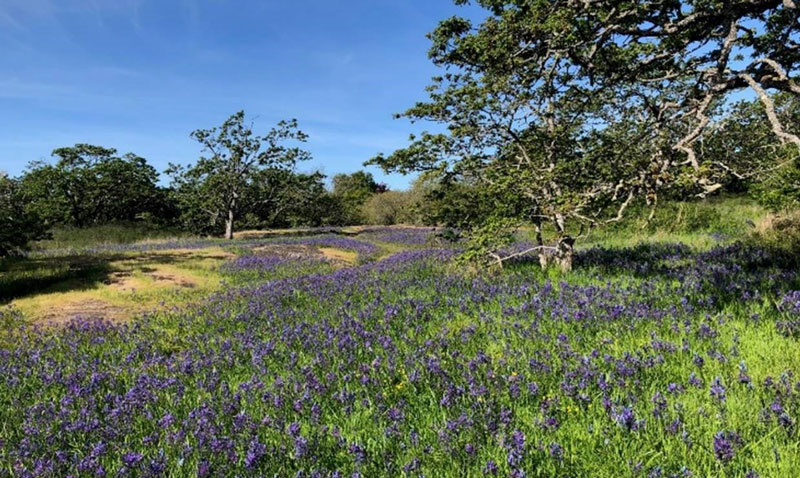
Eco-Cultural burning practices have been used by Coast Salish Nations in the Southern Gulf Islands for thousands of years. Indigenous fire stewardship built resiliency in ecosystems, keeping sites healthy and productive. The endangered Garry oak ecosystems in the Gulf Islands region were carefully maintained by centuries of eco-cultural burning. To learn more about the Garry oak ecosystem restoration in Gulf Islands National Park Reserve, visit here.
When settlers and newcomers arrived here, colonial policies prohibited First Nations from lighting these important fires, which dramatically altered ecosystems over time.
Parks Canada is committed to working with local First Nations to re-establish eco-cultural burning practices in Gulf Islands National Park Reserve.
Prescribed Burning
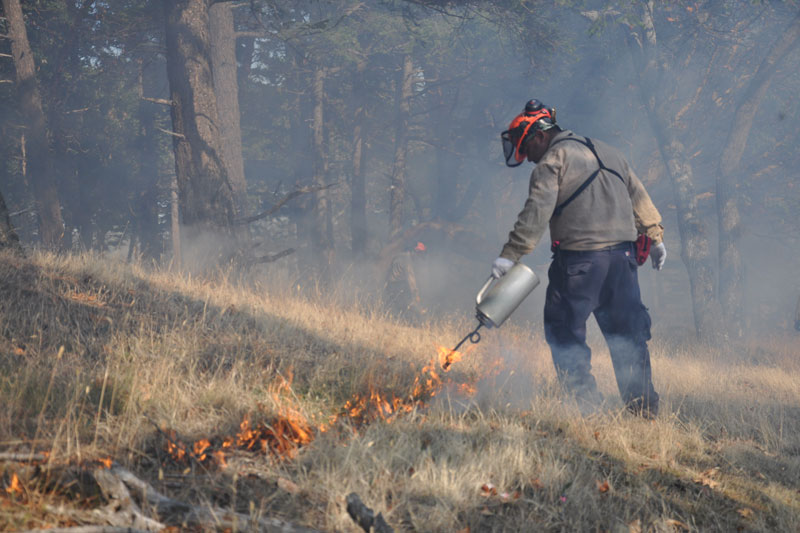
Parks Canada uses prescribed fires to manage ecosystem health, and to reduce wildfire risk.
A “prescribed fire” is planned, intentionally ignited, and carefully managed. This is different than a wildfire, which is unplanned and often started unintentionally or by lightning, and can quickly get out of control. Prescribed fires are ignited by trained Parks Canada employees.
“Prescriptions” are the conditions and procedures needed to burn safely and effectively. Trained specialists decide when, where, and under what limits such fires will be permitted to burn. Factors such as weather, vegetation type, moisture levels, terrain, and expected fire behavior are taken into account when writing a prescription. Prescribed fires are conducted to meet ecological goals, such as:
- Reduce dead vegetation and recycle nutrients to enrich the soil.
- Reduce the hazardous, dead, flammable materials that could contribute to large, catastrophic wildfires.
- Promote new growth to provide habitat and food for many species of plants and animals.
Careful planning and monitoring is used to determine when and where a prescribed fire will help improve or maintain the health of the National Park Reserve.
- Date modified :